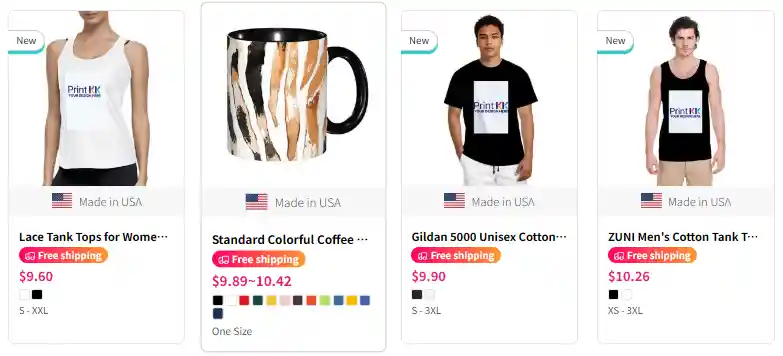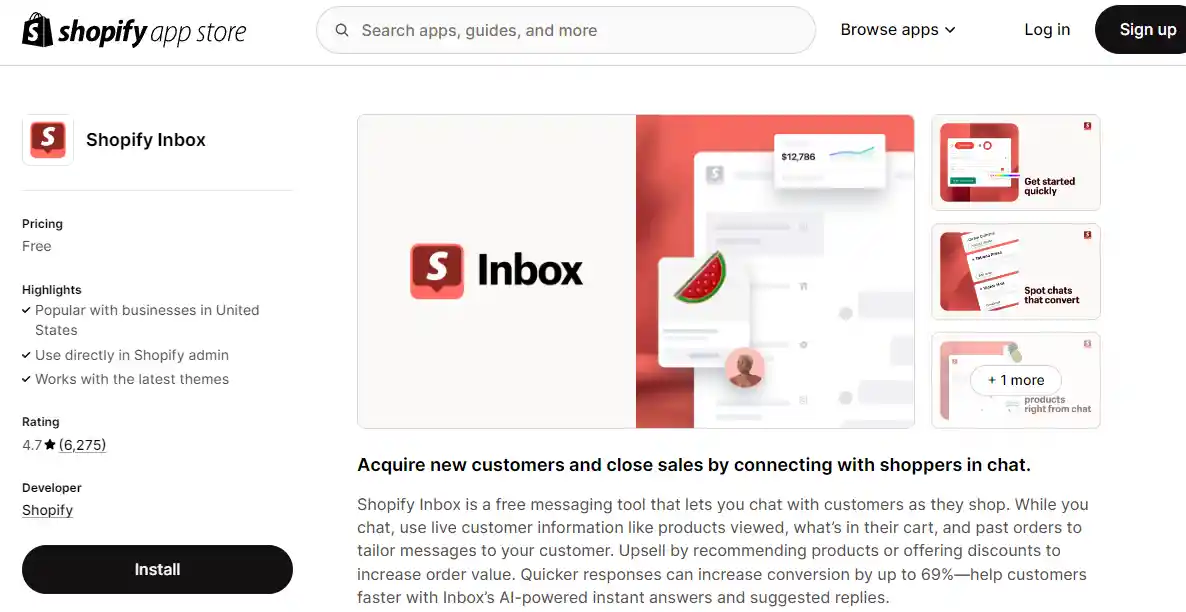
Imagine running an online store without ever stocking products or packing orders. Sounds like a dream? That's Shopify dropshipping in 2025—and it's easier to start than you think.
By 2026, the global dropshipping market will hit $476.1 billion. But here's the catch: while the opportunity is huge, so are the pitfalls.
- This guide cuts through the noise. You'll learn how to:
- Launch a Shopify store in hours (no tech skills needed)
- Find winning products before they go viral
- Avoid costly mistakes that sink 90% of new stores
Ready to turn your side hustle into a revenue stream? Let's dive in—your $476 billion opportunity starts now.
Shopify Dropshipping Realities: Key Facts Before You Begin
Dropshipping on Shopify opens doors to exciting possibilities. You can sell products without ever handling them. Ready to jump in? Here's what you need to know to start strong and thrive.
Freedom Without Inventory
With dropshipping, you skip the hassle of stocking products. Want to try selling phone chargers today and cozy blankets tomorrow?
Test new products without spending a dime on inventory. Your supplier handles storage and shipping, saving you from warehouse costs. It's a low-risk way to explore endless opportunities.
Profits with Potential
Suppliers charge a price between wholesale and retail, so your margins start modest. But that's okay. Dropshipping lets you test what sells without big investments.
If a product takes off, you can scale up and buy in bulk for bigger profits. Of course, you can also compare suppliers to see which products are priced lower.
It's a smart way to grow at your own pace. Dropshipping is about testing, not massive profits right away.
Quality Control Takes Teamwork
You won't handle the products, so picking a reliable supplier is key. A great one ensures quality control and happy customers.
If issues pop up, track returns and feedback to stay on top. Partner with suppliers who pack and ship with care, and you'll keep your customers smiling.
Why Would Customers Choose You?
Why will customers pick your store? It's all about connection. Maybe they vibe with your brand's story, discover you first, or love your unique style.
Great marketing makes your shop irresistible. Create a brand that feels special, and customers will keep coming back.
Blending Is the Sweet Spot
The best Shopify stores mix dropshipped and stocked products. Think big brands like Target—they stock top sellers but dropship niche items.
This grows your catalog without draining your budget. Start small, test bold ideas, and watch your business soar.

How Much Money Can You Make from Dropshipping on Shopify?
That's probably one of the first questions you've asked—and it makes sense. You want to know if all the effort is worth it. So, let's break it down.
The amount of money you can make with Shopify dropshipping really depends on a few key things:
- The products you choose
- How well you market them
- Your profit margins
- And how much time you put in
When you're just starting out, don't expect to make thousands overnight. Most beginners earn between $100 and $1,000 per month in their first few months. That's because it takes time to test products and learn how to run ads. At this stage, your profit margin might be around 10% to 20%.
As you get better, those numbers can grow. Intermediate dropshippers often make $5,000 to $50,000 per month, depending on how well their store runs. They've usually figured out how to find winning products and scale ads. Profit margins here tend to land between 20% and 35%.
Now, some advanced sellers go even further. Top stores can bring in $100,000+ per month, especially if they're building a real brand. They know how to manage costs, create good customer experiences, and keep ads profitable. Margins might reach 30% to 40%.
So, how much can you make? That depends. Are you treating it like a side hustle—or like a real business?
How Does Shopify Dropshipping Work in 7 Steps?
Shopify dropshipping is a fantastic way to launch your online store without the hassle of managing inventory or shipping. It's a straightforward process where you sell products through your Shopify store, and your supplier takes care of the rest.
Step 1: Set Up Your Shopify Store
Kick off your Shopify journey by picking a niche you're passionate about. This isn't just about what sells—it's about what you love. A niche like eco-friendly pet accessories or smart home gadgets gives your store a unique edge.
Sign up on Shopify, choose a theme that vibes with your brand, and customize it with your logo and colors—keep it clean and easy to navigate.

Step 2: Choose a Supplier Who Shares Your Values
Finding the right supplier is like finding the perfect dance partner. Look for those who align with your brand—think sustainability, local sourcing, or fast shipping. Apps like Oberlo, Spocket, and PrintKK connect you with suppliers, but don't settle.
Check reviews, shipping times, and even their social media vibe. Customers care about the story behind their products, so a supplier with a good one can set you apart.
Step 3: Select Products with Data-Driven Insights
Don’t guess—use tools like TrendHunter or Shopify's reports to spot what's trending. Browse your supplier's catalog and pick items that fit your niche and have great reviews.
Look for standout products that spark excitement. Your catalog is a treasure trove—dig deep to find those hidden gems.

Step 4: Set Smart Prices with Shopify's Tools
Pricing is a balancing act. Cover your product costs, Shopify fees, and marketing while leaving room for profit.
Use Shopify's pricing tools to find that sweet spot—dynamic pricing, like adjusting based on demand, can keep you competitive.
Your prices should feel fair and reflect your product's value, not just undercut everyone else.
Step 5: Market Your Store with Connection, Not Just Ads
Go beyond ads—team up with micro-influencers who get your brand or use AI tools for personalized emails.
Share your store's story through short videos or social media polls. Engage your audience like friends, not just customers. It’s less about shouting and more about chatting.
Step 6: Let Automation Handle the Orders
When a customer orders, automation takes over. Shopify sends the details to your supplier, who picks, packs, and ships directly to your customer. You Just keep an eye on the dashboard to ensure it's smooth sailing.
If there's a delay, nudge your supplier fast. Less stress means more time to grow.
Step 7: Elevate Customer Service with Smart Tools
Customer service is your secret weapon. Use chatbots or AI assistants for quick answers to "Where's my order?"—saving you for the big stuff.
Reply to emails within 24 hours, handle returns with a smile, and check in after delivery. A happy customer doesn't just return—they tell everyone about you.

Common Pitfalls in Shopify Dropshipping and How to Avoid Them
1. Late Deliveries and Unreliable Suppliers
Have you ever sat up at 3 AM, pinging a supplier because a package is "somewhere between China and nowhere"? When deliveries drag on, customers get nervous.
To avoid this, check your suppliers before you list products. Consider working with local, high-quality suppliers. This can shorten shipping times and keep return rates to a minimum.
2. Overspending on Ads
Burning through $2,000 on Facebook ads in your first month is a common mistake. You may think more spend equals more sales, but that can backfire. Instead, try to:
- Set a clear ad budget
- Track your cost per acquisition (CPA)
- Scale only when you see real returns
This way, you keep control of your money and learn what works without wiping out your savings.
3. Skipping Product Testing
Is it tempting to add dozens of items at once? If you skip testing, you might never know which one will sell.
Order samples for yourself or ask a friend to try them. By touching the product, you can spot quality issues and decide if it fits your audience.
4. Poor Customer Communication
Ignoring messages leads to complaints and extra returns. Your customers need updates on order status and tracking info. You can set up simple email templates or use a chat app that replies with order details automatically.
When your customers feel informed, they worry less—and that means fewer support tickets.
Is Print-on-Demand a Better Alternative to Shopify Dropshipping?
Let's cut to the chase: both models let you sell products without inventory, but they work very differently. Which one fits your goals better? Here's a breakdown.
1. Fewer Headaches with Quality Control
With dropshipping, you rely on third-party suppliers to ship products directly to customers. But what if the item arrives damaged, or the quality doesn't match the photos? You get blamed, even though you've never touched the product.
Print-on-demand (POD) solves this by partnering with trusted printers who handle production. You control the designs, and they handle the rest.
2. Stand Out in a Crowded Market
Dropshipping often means selling generic products (notebooks, fitness gear) that thousands of others are already promoting. POD lets you create unique, personalized items—think custom garden decor or desk lamps with your artwork.
Japanese shoppers, for example, love niche designs like anime or minimalist styles. Why compete for the same customers when you can carve your own niche?

Custom Square Table Lamp with USB Port Gold Trim - Print on Demand Fulfillment - PrintKK
3. Higher Profit Margins (If You Do It Right)
Dropshipping margins can be razor-thin after ads and supplier fees. POD gives you more control over pricing.
For example, selling a 15 production cost leaves room for profit and ads. Plus, custom products often justify higher prices because they're one-of-a-kind.
4. Less Marketing Guesswork
Dropshipping requires constant testing of products and ads. Some users spend $500 per month on advertising just to find a "hot" product.
POD simplifies this: if your designs resonate with a specific audience (e.g., cat lovers or gamers), you can build a loyal fanbase over time.

Custom Printed on Demand Adult Bucket Hat - Hats & Caps - PrintKK
Why PrintKK Could Be Your Secret Weapon
If you're leaning toward POD, check out PrintKK. They specialize in high-quality, quirky products that stand out:
- Wall art with custom artwork (perfect for hobbyists)
- Cozy pajamas with bold prints
- Canvas aprons for chefs or DIY enthusiasts
- Custom lighting for home decor fans
PrintKK integrates seamlessly with Shopify, so you can launch products in minutes. No coding, no fuss.
Expert Tips
With Shopify dropshipping, you can easily open an online store without having to stock or process orders. Just focus on choosing products and marketing, and the supplier will take care of the shipping. This model eliminates the pressure of inventory and reduces risk.
As long as you avoid common mistakes, you can succeed in this field. This provides you with a flexible entrepreneurial opportunity to realize your dreams while earning a stable income. Are you ready to get started? Your business opportunity is right in front of you!










 Global Shipping
Global Shipping




 Made in USA
Made in USA
























